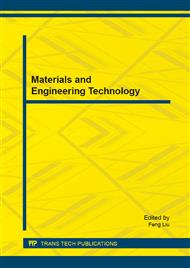p.210
p.214
p.221
p.231
p.238
p.243
p.249
p.258
p.262
Simulation and Experimental Analysis of the Infrared Detection for Surface Cracks of Metal Pipes with Penetration Treatment
Abstract:
Working in the corrosive environment for a long time, it is easy for metal pipes to produce stress corrosion cracks which will affect the use. An infrared detection method combining permeate treatment with heat-incentive steam is proposed to detect surface cracks, which then has been verified by simulations and experiments. For the simulation, pipe model including four cracks of different depth and width was constructed by ANSYS. Transient thermal analysis was made after convection incentive loaded on internal and external wall in the case of whether or not undergo surface infiltration processing. For the experiment, pipe including cracks were made the same as simulation parameters, then experiments were made using the thermal excitation system in two cases. Surface temperature distributions of the pipe were compared in two cases, the results of the study show that penetration treatment before heat incentive can significantly improve the surface crack detection sensitivity.
Info:
Periodical:
Pages:
238-242
Citation:
Online since:
January 2015
Authors:
Keywords:
Price:
Сopyright:
© 2015 Trans Tech Publications Ltd. All Rights Reserved
Share:
Citation:


